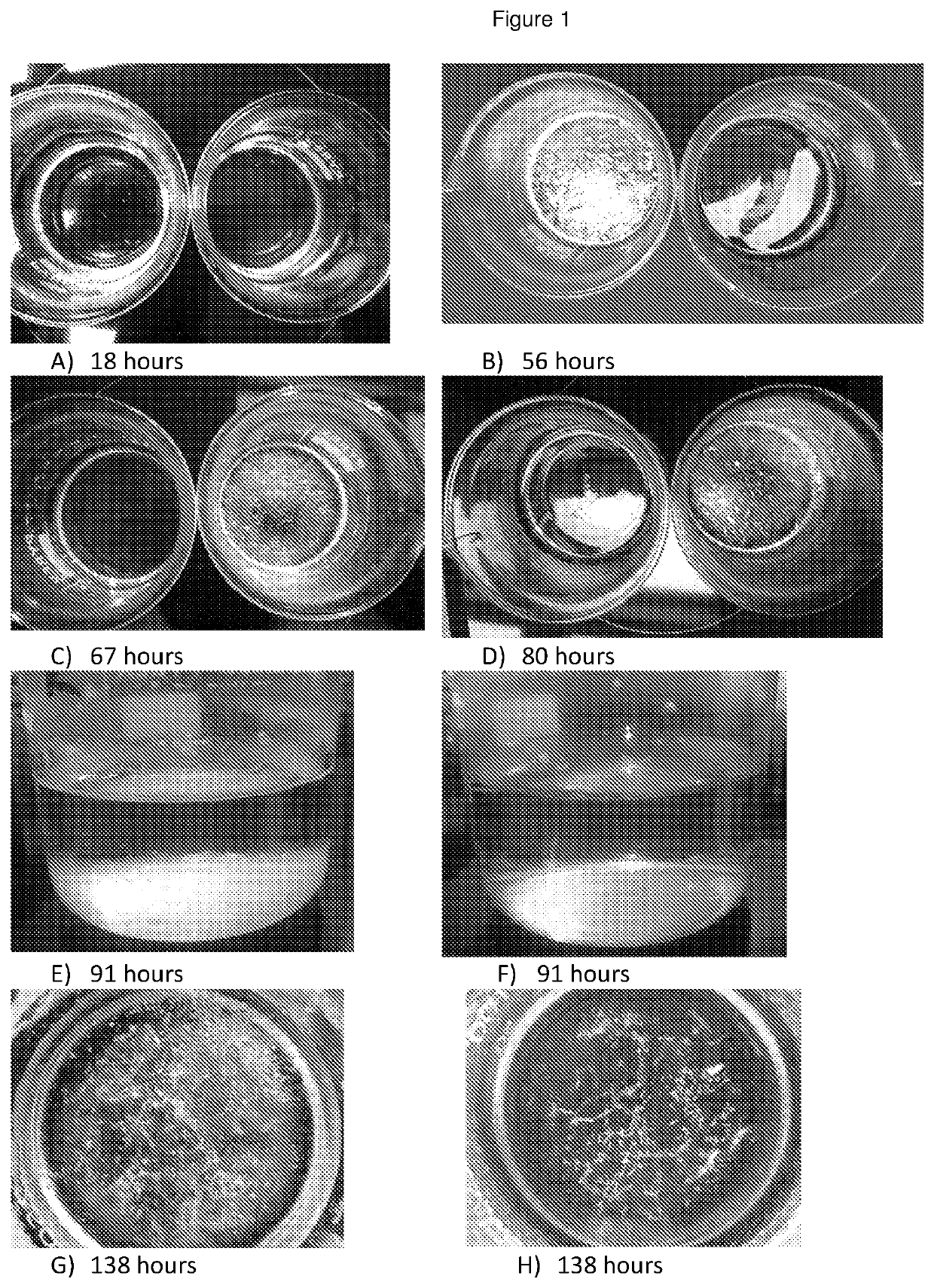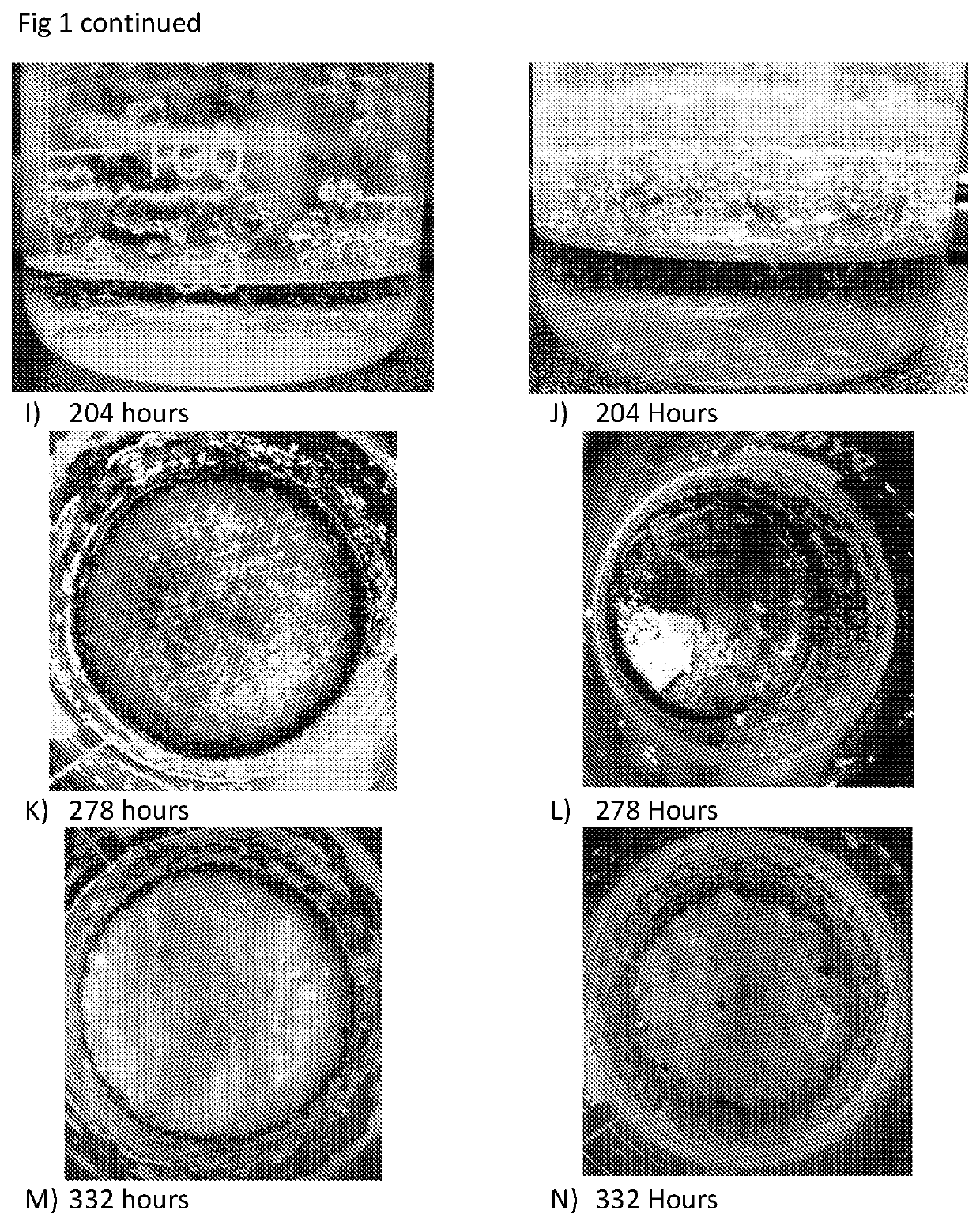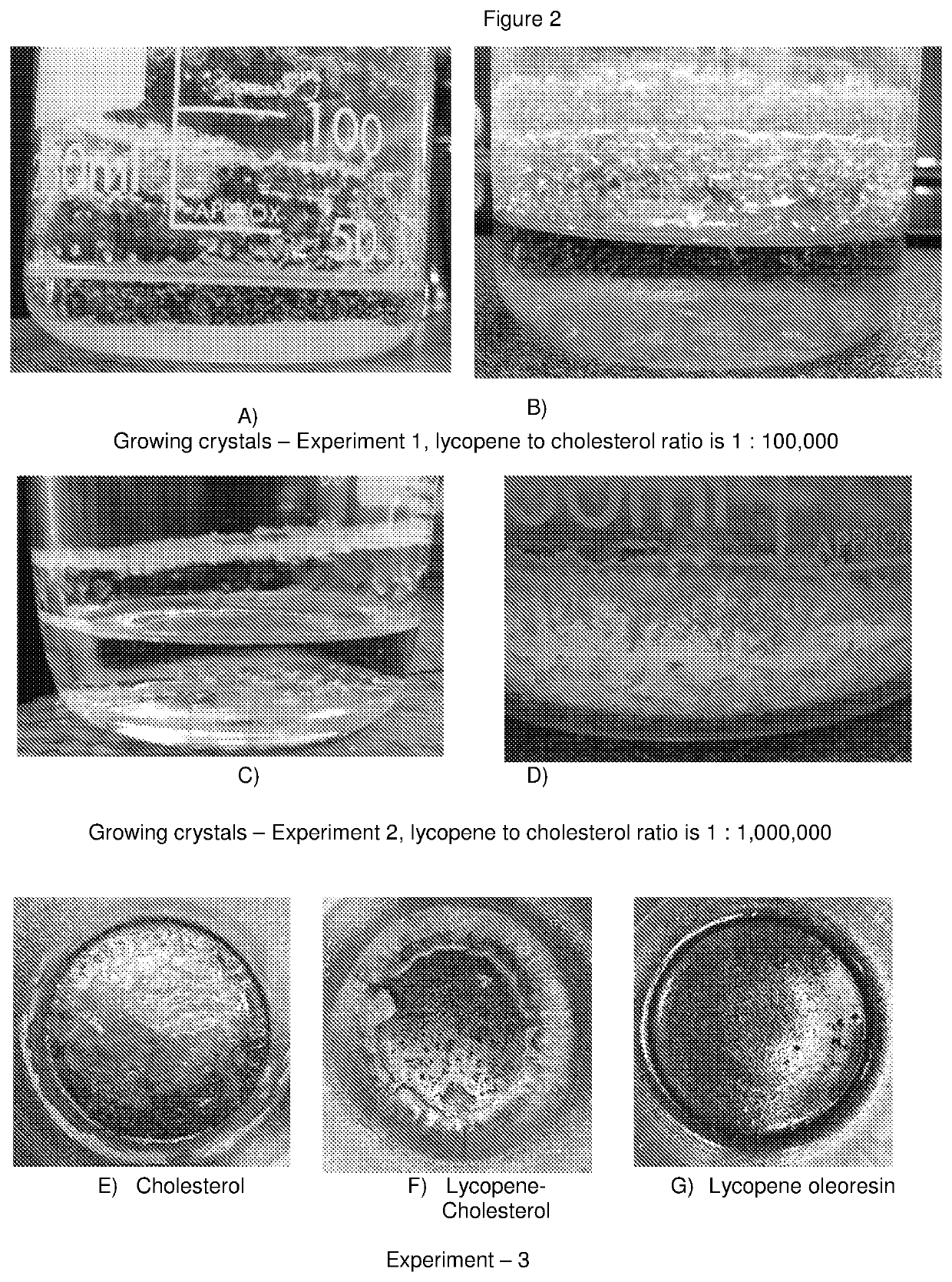Treatment of cholesterol crystal formation
a cholesterol crystal and crystallization technology, applied in the field of treatment of cholesterol crystallization, can solve the problems of cholesterol crystal formation, gallstone disease is a common and costly serious medical condition, and the crystallization of cholesterol crystals is relatively inert in the crystallization state, and may be extremely difficult or even impossible to be immobilized
- Summary
- Abstract
- Description
- Claims
- Application Information
AI Technical Summary
Benefits of technology
Problems solved by technology
Method used
Image
Examples
example 1
[0112]Prevention of or Interference into the Formation of Cholesterol Crystals.
[0113]A solution of 198 ml of 1 g of cholesterol (Sigma) in 99% ethanol was divided in two equal parts. In one part 1 ml of ethanol containing 100 μg of the dissolved lycopene was added. This provided ratio of lycopene to cholesterol as 1:106. Into the other part, the control, 1 ml of the ethanol itself was added. Then both samples were left in the dark room for evaporation under 20-22° C. Recording of the status of the both samples were made at least on a daily or even shorter intervals. Some results of this experiment are presented in FIG. 1 A-N
[0114]It was observed that presence of lycopene at a concentration of less than one molecule per million molecules of cholesterol can significantly affect the rate of its crystallisation. Firstly, floating cholesterol crystals were already observed in the control sample after two days of the evaporation. No signs of these crystals were observed in the presence of...
example 2
[0115]Changes of Physical Properties of Cholesterol Crystals.
[0116]In a range of experiments where ratio of cholesterol to lycopene varied, from 1,000 to at least 10,000,000 molecules of the former to 1 molecule of the latter, noticeable changes in the physical properties of crystals were observed.
[0117]In all control experiments, cholesterol crystallised into a plate-like crystals, see FIG. 2B and FIG. 2D. Sometimes they could create a thick flat plate of few centimetres across, like the one on the bottom of the glass in the experiment 2, FIG. 2C. However, when lycopene was present in the medium a formation of a new type of crystals was observed. There were significantly smaller and in a shape of needle- or narrow tube-like crystals:[0118]FIG. 2B, 2C and[0119]FIGS. 3B, 3D and 4B.
[0120]Under the light and confocal microscopy these difference between two types of cholesterol crystals, in size and shape, are more evident (FIGS. 5A-F and 6A-B).
[0121]It was interesting to observe that t...
example 3
[0124]Use of Carotenoids to Disassemble Cholesterol Crystals—Lycopene.
[0125]To 100 mg of crystallised cholesterol (Sigma) 20 ml of ethanol solutions with different concentrations of lycopene were added. As a control, 20 ml of the same ethanol was used but without any lycopene. After gentle stirring for a couple of minutes, under the room temperature of about 20-22° C., recording of the results was made.
[0126]This experiment was repeated a number of times at different range of lycopene concentrations. Under these conditions, lycopene was able to reduce the number and size of cholesterol crystals at a ratio of about 1 molecule of lycopene per 1,000,000 of molecules of cholesterol or higher. When the ratio reached 1 to 100,000, a complete disaggregation of these crystals was observed (FIG. 7A-F).
PUM
| Property | Measurement | Unit |
|---|---|---|
| temperature | aaaaa | aaaaa |
| size | aaaaa | aaaaa |
| biocompatible | aaaaa | aaaaa |
Abstract
Description
Claims
Application Information
 Login to View More
Login to View More - R&D
- Intellectual Property
- Life Sciences
- Materials
- Tech Scout
- Unparalleled Data Quality
- Higher Quality Content
- 60% Fewer Hallucinations
Browse by: Latest US Patents, China's latest patents, Technical Efficacy Thesaurus, Application Domain, Technology Topic, Popular Technical Reports.
© 2025 PatSnap. All rights reserved.Legal|Privacy policy|Modern Slavery Act Transparency Statement|Sitemap|About US| Contact US: help@patsnap.com



